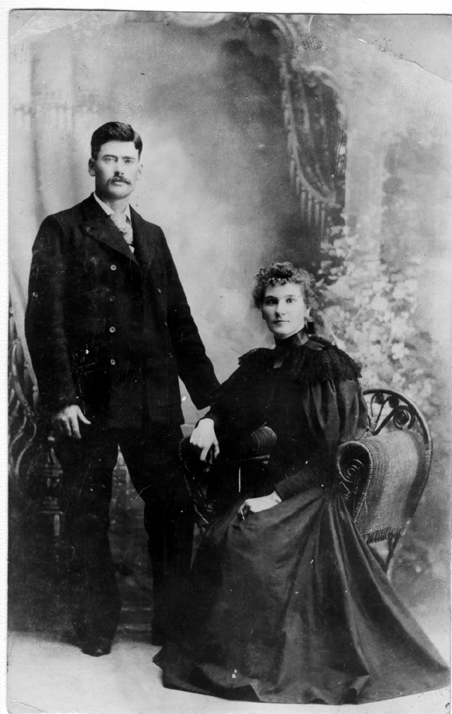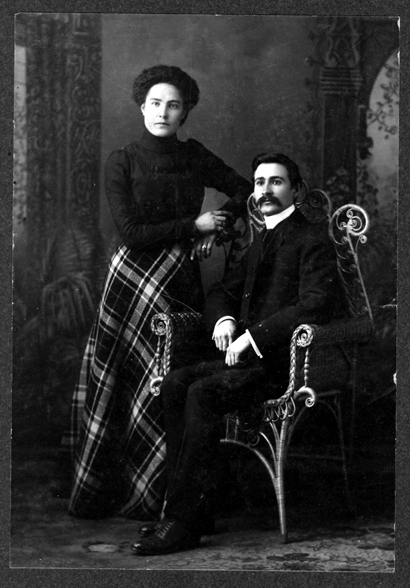| Sources |
- [S1115] Le Bulletin des Recherches Historiques, Vol. XIV, p. 343 brh_14_adhemar.pd.
- [S793] Dictionary of Canadian Biography Online, (http://www.biographi.ca), ADHÉMAR DE LANTAGNAC, GASPARD.
ADHÉMAR DE LANTAGNAC, GASPARD (baptized Gaspard-Balthazar), officer in the colonial regular troops and king’s lieutenant of Montreal; b. 3 March 1681 in Monaco, son of Antoine Adhémar de Lantagnac and Jeanne-Antoinette de Truchi (Truchy); d. 7 Nov. 1756 in Montreal.
The Adhémar family may be traced back to the time of the first crusade; in the 17th century, the Lantagnac branch was headed by Pierre Adhémar and his wife Anne, sister of Philippe de Rigaud* de Vaudreuil, who was appointed governor general of Canada in 1703. Their second son, Antoine, Gaspard’s father, was named governor of Menton in 1701 for the prince of Monaco.
In 1702, at the age of 21, Gaspard, a tall youth, joined a regiment of the king’s household. Unable to afford a captaincy, he sailed for Canada in 1712. He had to wait until 1715 for a vacant ensignship but nine months later was promoted lieutenant. In 1721 he became the subject of a dispute between Bishop Saint-Vallier [La Croix*] and his great-uncle, Governor Vaudreuil. The 39-year-old lieutenant was in love with Geneviève-Françoise, daughter of Mathieu-François Martin* de Lino, councillor. De Lino was prominent in Canadian society, but he and his wife were bourgeois, not noble. Consequently, Vaudreuil expressed his disapproval to the council of Marine and to the bishop. Nevertheless, the latter married the couple on 7 March 1720. Vaudreuil considered his grand-nephew’s stubbornness and the bishop’s concurrence an affront to his authority and transferred Adhémar to Île Royale (Cape Breton Island) in May 1721.
The following year Adhémar went to France on furlough, taking letters from Vaudreuil and the intendant, Bégon, to the court. They recommended him for a captaincy but neither they nor the prince of Monaco were successful, although in 1726 the prince’s efforts were a factor in the council’s final approval of Adhémar’s promotion.
In 1728 Adhémar requested the king’s assistance for five years with a tile factory he had begun one league above Quebec on the north shore. The following year free passage was granted to two workers, but before the project became established Adhémar abandoned it to serve at Fort Chambly. Some of his material was used by Nicolas-Marie Renaud d’Avène Des Méloizes in his own tile factory.
Adhémar’s years as commandant at Chambly, although lucrative, were not entirely happy. His wife died leaving him in his late fifties with eight young children. He settled in Quebec, where, in 1742, he was invested with the cross of the order of Saint-Louis. On 6 March 1748, in his 68th year, Adhémar was appointed major of Montreal, and 14 months later king’s lieutenant of the same town. In the latter capacity he was interim commandant for Charles Le Moyne de Longueuil in 1752, but when Longueuil died in 1755 Adhémar was too old to replace him. On 17 March 1756 he retired with a pension of 2,000 livres.
The only son who lived beyond youth, Pierre-Gaspard-Antoine, served in the Louisiana colonial regular troops, was a captive of the Cherokees for nine years, and moved to France in 1765. Of Adhémar’s seven living daughters, Anne married in 1741 Augustin-Antoine de La Barre, an officer in the colonial regular troops, and the other six devoted their lives to serving others through religious orders, with the Congregation of Notre-Dame, the Ursulines, at the Hôpital Général of Quebec or the Hôtel-Dieu of Montreal.
C. J. Russ
AJQ, Registre d’état civil, Notre-Dame de Québec, 7 mars 1720. AN, Col., C11A, 43, 63. ANQ, Greffe de J.-É. Dubreuil, 3 mai 1721. C.-J.-E. de Boisgelin, Esquisses généalogiques sur les familles de Provence (Draguignan, Aix-en-Provence, 1900). Caron “Inventaire de documents,” APQ Rapport, 1941-42, 200. Fauteux, Les chevaliers de Saint-Louis, 137. Le Jeune, Dictionnaire. P.-G. Roy, Les offîciers d’état-major, 119–23. Tanguay, Dictionnaire. Jules Villain, La France moderne; grand dictionnaire généalogique, historique et biographique (4v., Montpellier, France, 1906–13), I, 403–17.
J.-N. Fauteux, Essai sur l’industrie, I, 165–67. P.-G. Roy, La famille Adhémar de Lantagnac (Lévis, Qué., 1908); La ville de Québec, I, 482. Guy Frégault, “Un cadet de Gascogne: Philippe de Rigaud de Vaudreuil,” RHAF, V (1951–52), 40. P.-G. Roy, “Les gouverneurs de Montréal,” BRH, XI (1905), 171. Henri Têtu, “Le chapitre de la cathédrale de Québec et ses délégués en France,” BRH, XVI (1910), 263, 301.
- [S793] Dictionary of Canadian Biography Online, (http://www.biographi.ca), ADHÉMAR DE LANTAGNAC, GASPARD.
|




 [2]
[2]  [3]
[3]  d. 29 Jan 1738, Chambly, Monteregie, Quebec, Canada
d. 29 Jan 1738, Chambly, Monteregie, Quebec, Canada  (Age ~ 38 years)
(Age ~ 38 years)  [3]
[3] 